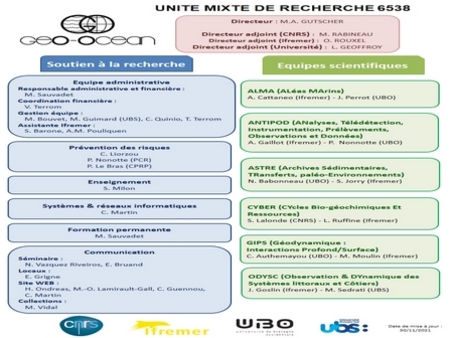The rock dredge
Deep dredging is an efficient and quick exploration tool to get a broad picture of the geological diversity of an area.
Usually, the ship drag on a flank of a submarine relief a rock dredge composed of a heavy metallic net of about one meter of diameter and a “mouth” armed with solid teeth, capable to dislocate any rock on the seafloor.
The result is often spectacular: after one hour on the bottom at thousands meters deep and cable tensions over 10 tons, the dredge often comes up with hundreds of rocks, of sizes between 5 to 80 cm (any rock that can enter the dredge “mouth” and stay inside the net), cumulating sometimes over a ton of rocks.
The diversity of collected materials can be surprising, especially in geologically diverse areas explored like on the Hermine expedition.
Once on the working deck, the dredge is secured and the net emptied for the geologist to begin a treasure hunt. They have to observe, brake and sort hundreds of fragments.
After an hour of work, the working deck have to be cleaned for other operations. Geologists have to select only the most representatives and interesting pieces of rock for further analysis and most of the dredge is thrown back in the water.

